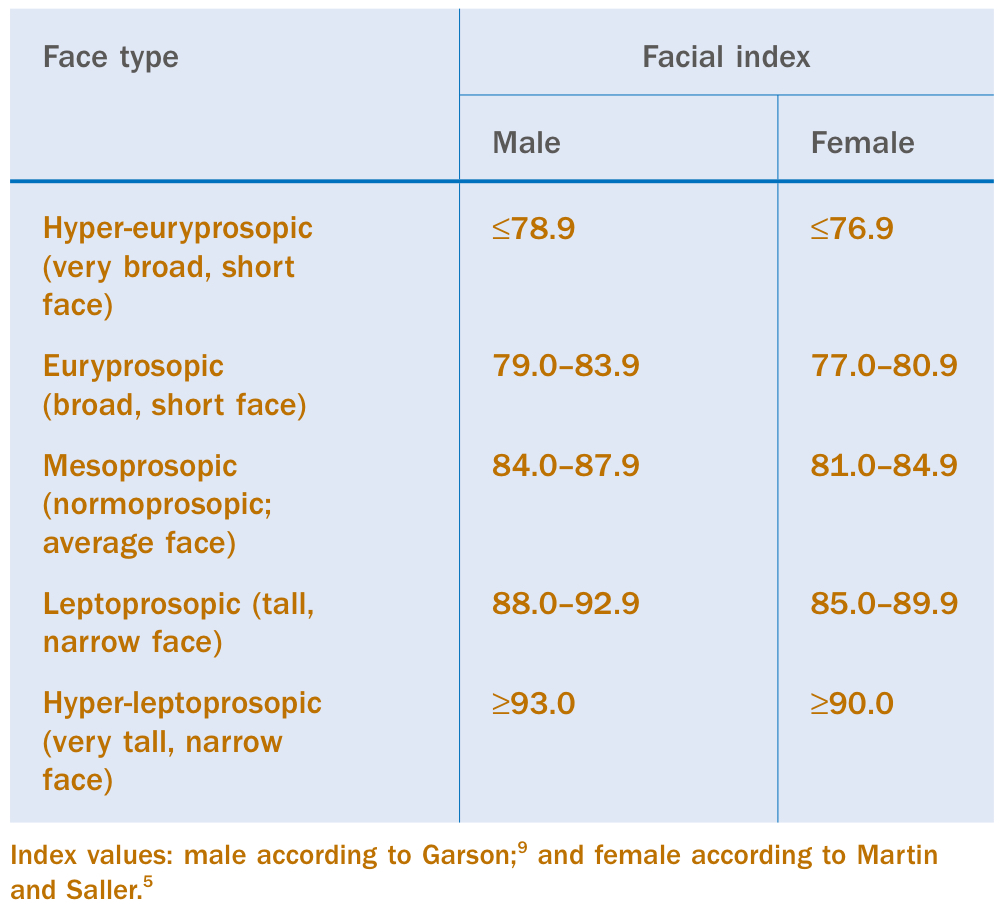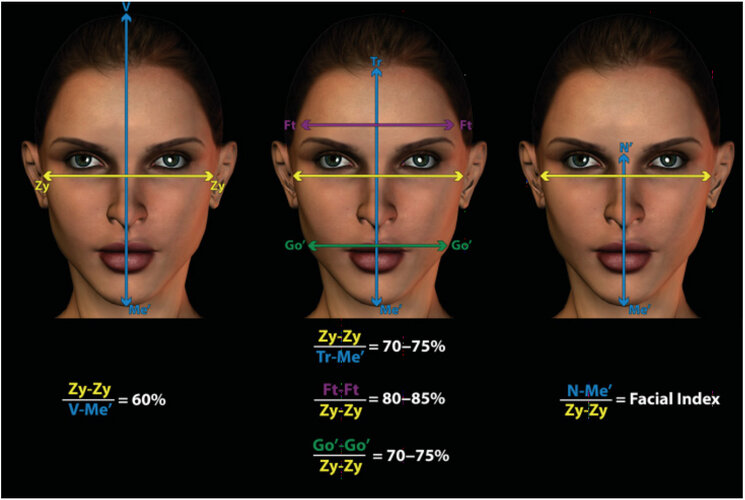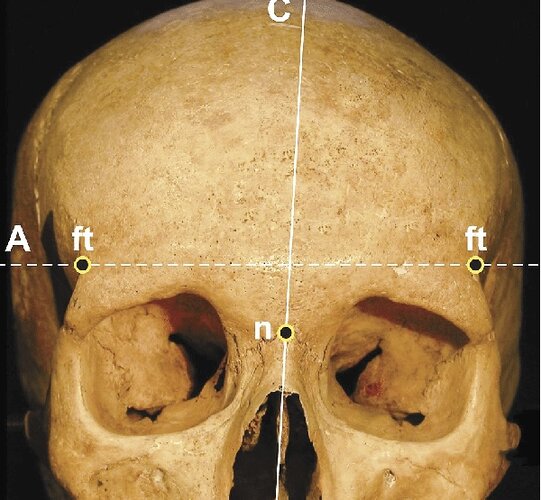stress
Bronze
- Joined
- Oct 7, 2023
- Posts
- 340
- Reputation
- 294
Determining the face shape is the first step in analyzing your face but people overlook it a lot, or they only look at part of the picture (aka only one of the important ratios) so I wanted to make this thread as a kind of checklist to make sure you went through all the important measurements to get your face shape.
(All facial proportions are usually put in terms of the smaller value as a percentage of the larger value. Ex. If Height = 10 and width = 5, width to height is 50%)
There are three main important categories of facial width and height ratios. These are:
-Cranofacial height to facial width
-Physiognomical facial height to width
-Morphological face height to width (facial index)
First category, cranial height to width ratio. This is simply the relationship between the full skull height (vertex to menton) and the facial width (bizygomatic) (Zy’ to Zy’). The normative value is 60% or 0.6.
Second category, physiognomical facial height to width ratios. Physiognomical facial height is measured from trichion (lowest point on non-receding hairline) to menton.
Bizygomatic width should be 70-75% (0.7-0.75) of this measurement.
Bitemporal width (Forehead width measured from Ft’ to Ft’) should be 80-85% of bizygomatic width.
Bigonial width should be 70-75% of bizygomatic width.
Finally the morphological face height to width aka the “facial index”
Morphological face height is measured from nasion to menton.
The facial index is the relationship between morphological face height and bizygomatic width.
Using the facial index you can classify a face as one of three categories, euryprosopic, mesoprosopic, and leptoprosopic.
Eury is wide, meso is in the middle, and lepto is long.
Here is the table of values for this measurement:

Hope this was helpful!
(All facial proportions are usually put in terms of the smaller value as a percentage of the larger value. Ex. If Height = 10 and width = 5, width to height is 50%)
There are three main important categories of facial width and height ratios. These are:
-Cranofacial height to facial width
-Physiognomical facial height to width
-Morphological face height to width (facial index)
First category, cranial height to width ratio. This is simply the relationship between the full skull height (vertex to menton) and the facial width (bizygomatic) (Zy’ to Zy’). The normative value is 60% or 0.6.
Second category, physiognomical facial height to width ratios. Physiognomical facial height is measured from trichion (lowest point on non-receding hairline) to menton.
Bizygomatic width should be 70-75% (0.7-0.75) of this measurement.
Bitemporal width (Forehead width measured from Ft’ to Ft’) should be 80-85% of bizygomatic width.
Bigonial width should be 70-75% of bizygomatic width.
Finally the morphological face height to width aka the “facial index”
Morphological face height is measured from nasion to menton.
The facial index is the relationship between morphological face height and bizygomatic width.
Using the facial index you can classify a face as one of three categories, euryprosopic, mesoprosopic, and leptoprosopic.
Eury is wide, meso is in the middle, and lepto is long.
Here is the table of values for this measurement:

Hope this was helpful!




